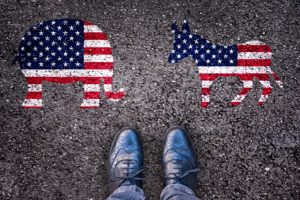By: Chandler Baker @bakechan21
All of our online networks connect to us as the hub. Some connected to each other, others are not. These networks have a significant impact on what content we see, do not see, and are able to interact.
The network I am most interested in discussing today is the invisible audience —the people who are watching your network but you don’t know were looking, or you didn’t know had the option to look—a scary thought, I know.
I think we all understand the broad network that we reach when we post on social media; however, we generally have a narrow audience in mind. The people view your videos, but do not like them.
Just one post to social media could reach millions; take our good friend Justine Sacco for example. As she made her journey from New York to South Africa, the woman lost her job and a social media firestorm had taken place.
Think about Justine and the incredible backlash that occurred from someone, part of her invisible audience, seeing Tweet was highly offensive and allowing that Tweet to reach other networks that set a media storm and ultimately ended her career.
Therefore, while the audience may be ‘invisible,’ it holds great power in controlling and managing our personalized networks.

Does online anonymity promote online aggression?
Does the ability to sit anonymously behind a computer prompt people to do and say things that they would not in real life? If their identity became public knowledge, would people still created the herd mentality that fills online newsrooms daily? One thing is for sure: the group or larger network that we are a part of influences how we may perceive or feel about a particular issue—for better, or for worse.
Another thing that our networks establish are norms. Social norms are mental representations of appropriate behavior that set a precedent for society to guide the behavior of individuals. However, what happens when an individual does not agree with social norms?
The Spiral of Silence
When looking at “The Spiral of Silence,” a major insight seen from studies on human behavior found that people are less willing to speak up about an issue, public or private, or discuss it with their friends, family or colleagues if they feel that their point of view does not agree with the majority.
 A huge presence I have noticed myself being guilty of “the spiral of silence” is during the election period. I come from family where both of my parents do not even speak about politics. Therefore, naturally when someone mentioned politics or I found myself browsing on my social media channels in the months leading up to and during the election, I would more often than not tune myself out of the conversation rather than become a part of it. I am not a very confrontational person to start; however, watching my peers argue endlessly over issues that they will never see eye to eye on prompted me to exit the conversation instead of engage.
A huge presence I have noticed myself being guilty of “the spiral of silence” is during the election period. I come from family where both of my parents do not even speak about politics. Therefore, naturally when someone mentioned politics or I found myself browsing on my social media channels in the months leading up to and during the election, I would more often than not tune myself out of the conversation rather than become a part of it. I am not a very confrontational person to start; however, watching my peers argue endlessly over issues that they will never see eye to eye on prompted me to exit the conversation instead of engage.
In the case of politics, I am sure there will always be people voluntarily succumbing to the spiral of silence with good reason.



